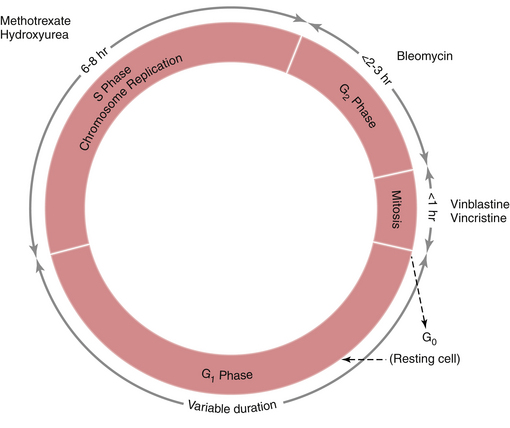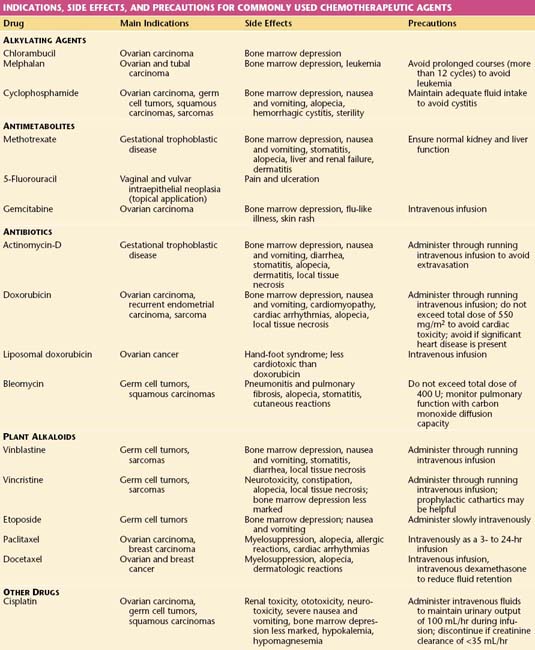Chapter 37 Principles of Cancer Therapy
 Cellular Biology
Cellular Biology
Interphase is subdivided into three separate phases (Figure 37-1). Immediately following mitosis is the G1 phase, which is of variable duration and is characterized by a diploid content of DNA. DNA synthesis is absent, but RNA and protein synthesis occur. During the shorter S phase, the entire DNA content is duplicated. This is followed by the G2 phase, which is characterized by a tetraploid DNA content and by continuing RNA and protein synthesis in preparation for cell division. When mitosis occurs, a duplicate set of chromosomal DNA is inherited by each daughter cell, thus restoring the diploid DNA content. Following mitosis, some cells leave the cycle temporarily or permanently and enter the G0 or resting phase.
 Chemotherapy
Chemotherapy
CLASSIFICATION OF CHEMOTHERAPEUTIC AGENTS
CHEMOTHERAPEUTIC AGENTS
The common agents used in the management of gynecologic malignancies may be classified as shown in Table 37-1. This table also contains a summary of the main indications for and side effects of these drugs.
 Radiation Therapy
Radiation Therapy
Radiation may be defined as the propagation of energy through space or matter.
TYPES OF RADIATION
There are two main types of radiation: electromagnetic and particulate.
UNIT OF RADIATION MEASUREMENT
The Gray (Gy) is equivalent to an absorbed energy of 1 joule per kilogram of absorbing material.







